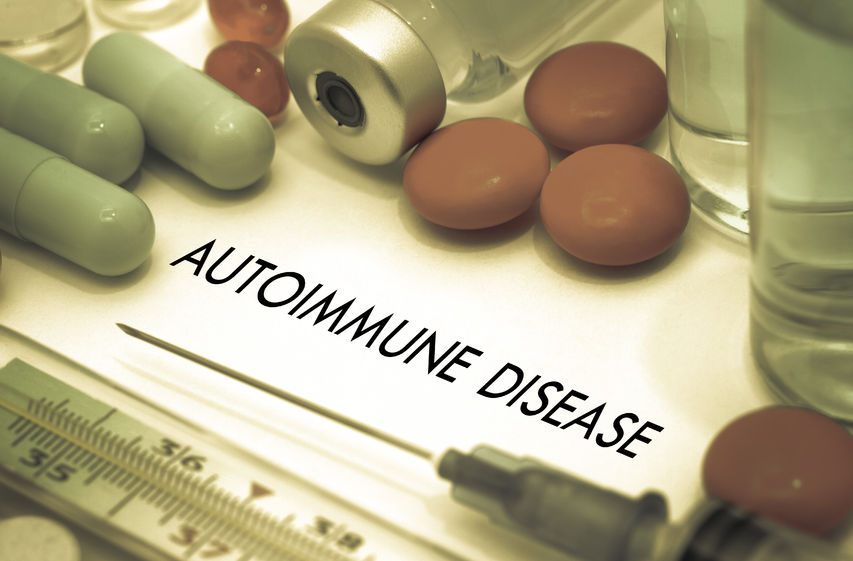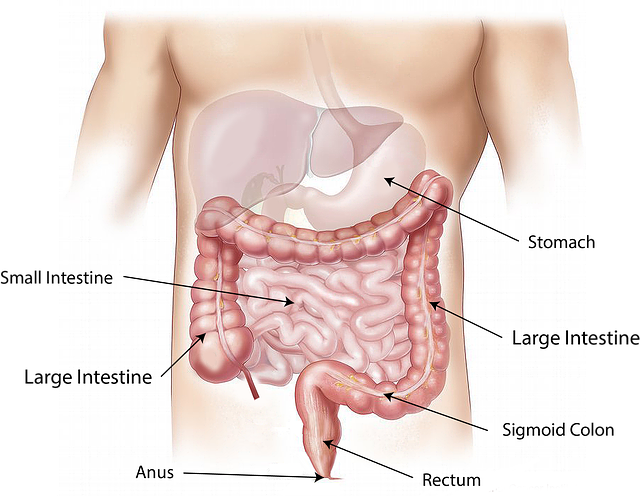Healing Leaky Gut: My Story About How I Finally Did It
Receive a free 50+ page guide with gut rebuilding recipes and tips from 45 wellness experts, courtesy of gut health expert Summer Bock. Also check out her Better Belly Project 2.0.
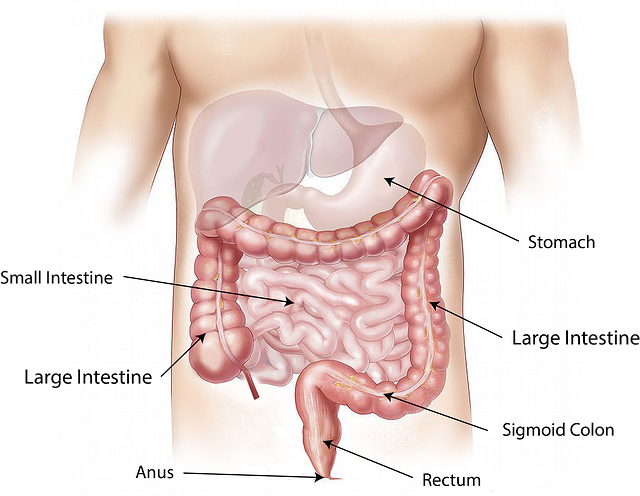 Healing leaky gut involves resolving the increased permeability of the small intestine
Healing leaky gut involves resolving the increased permeability of the small intestineI’d like to share my story about healing leaky gut to provide hope that you, too, can heal your leaky gut. I’m not saying that you should do everything I did. We are all different, and what works for one person might not work for another.
That said, you might want to experiment with some of the things I tried to see how your body responds. And I suggest you pay attention to the order in which you attempt interventions for healing leaky gut.
Leaky gut and celiac disease, as well as leaky gut and non-celiac gluten sensitivity, go hand in hand. Many healthcare practitioners, and their patients, believe that removing gluten from the diet will heal all the damage caused by gluten. And as a consequence, all the associated symptoms will resolve.
That seems to be true for some people. That certainly hasn’t been the case for me. My leaky gut persisted long past going gluten free. In fact, I’d say it took about 10 years for my attempts to heal leaky gut to actually work.
So this journey of healing leaky gut has been a long one for me. And I had a leaky gut for decades before that without even knowing it. At age 30, I was diagnosed with Hashimoto’s, and, as I now know, my leaky gut must have preceded that.
The reason? Hashimoto’s is an autoimmune disease of the thyroid gland. And leaky gut is one of three key ingredients required for the development of an autoimmune disease.
Did a Test Confirm I Had Leaky Gut?
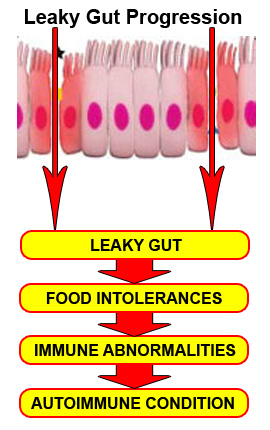 Courtesy of the Gluten Free Society
Courtesy of the Gluten Free SocietyI was not officially diagnosed with leaky gut by a traditional leaky gut syndrome test. The two tests that are commonly used to diagnose a leaky gut (officially called “increased intestinal permeability” or “pathogenic intestinal permeability”) are the Cyrex Labs Array 2 blood test and the lactulose/mannitol urine test.
For the latter test, Genova Diagnostics offers its Intestinal Permeability Assessment. However, other labs such as True Health Labs also offer this test.
However, if someone (like me) has an autoimmune disease and many food sensitivities, it's a given that leaky gut is present.
I have even heard experts say don't waste your money on testing for leaky gut if you have those issues going on. Instead, use your money on healing leaky gut. However, I did the testing because I wanted to check my status. I thought maybe, just maybe, I had finally healed my leaky gut.
I do have one bit of evidence that I had a leaky gut. In October 2012, my gastroenterologist at the time ordered blood work to check for the presence of celiac disease and inflammatory bowel disease (IBD). IBD includes Crohn’s disease and ulcerative colitis.
My results for the antibodies that are used to diagnose celiac disease were in the normal range. At that point, I had been gluten free for six years, so this news was not surprising.
However, in his letter to me in which he reported the results, he wrote that:
Your blood tests for Crohn’s and colitis were not consistent with either of these conditions according to the computer model analysis of your tests. However, you have elevated antibodies to proteins that are seen in Crohn’s disease and may be reflective of an injured or leaky gut.
So I do have some official evidence that suggests I had a leaky gut at that time. But I believe I had leaky gut for decades, perhaps since childhood—up until I finally healed it.
Proof That I Healed My Leaky Gut
I know I was successful at healing leaky gut because of the results from my Cyrex Labs Array 2 blood test (called the Intestinal Antigenic Permeability Screen). My results show I still have gut dysbiosis—but no leaky gut.
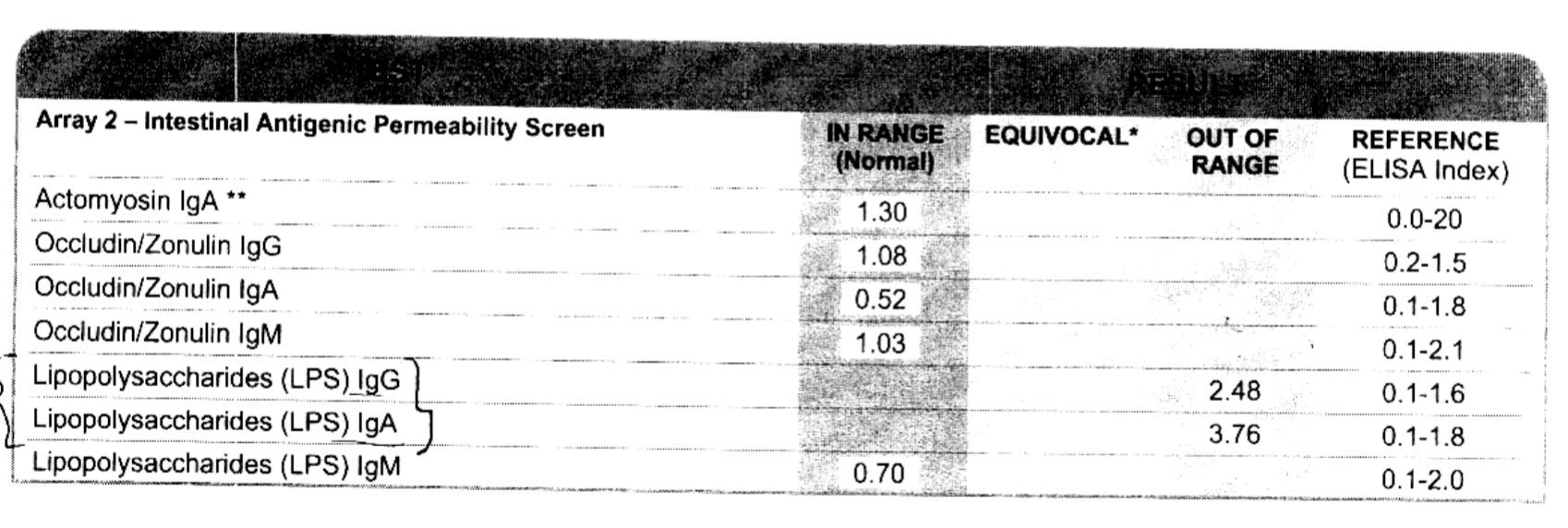
In addition, I developed no new food sensitivities for about a year prior to that test and since that test. That, by itself, is strong evidence of healing leaky gut.
Lastly, my Cyrex Labs Array 20 test (called the Blood Brain Barrier Permeability Screen) was clearly negative, as the following results show. I share this bit of excellent news because leaky gut and a leaky blood-brain barrier often co-exist.

Why Did Healing My Leaky Gut Take So Long?
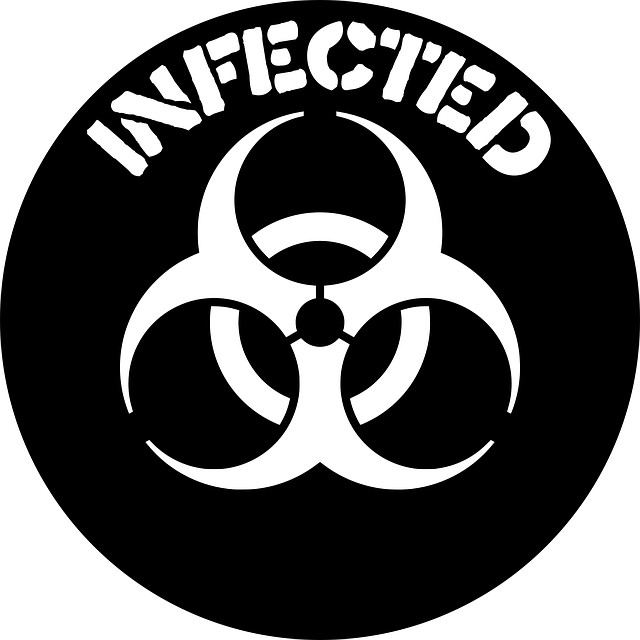 Gut infections from bacteria, yeast, and parasites can prevent healing leaky gut
Gut infections from bacteria, yeast, and parasites can prevent healing leaky gutI blasted my leaky gut with an arsenal of interventions over a period of years, and I wasted a lot of time doing important steps in the wrong order. My biggest mistake was following a leaky gut diet and supplement regimen (twice) before getting rid of a longstanding candida fungal infection.
Both attempts at healing leaky gut ultimately failed. However, I did experience temporary improvement in my digestive complaints that lasted a couple of months.
In fact, I believe that healing leaky gut requires first resolving any gut infections that are present. Helicobacter pylori (H. pylori) is a common infection that is usually found in the stomach and can interfere with healing leaky gut. It wasn’t one I had, though, as I tested negative for H. pylori according to multiple stool tests, a blood test, and a biopsy of my stomach during an endoscopy.
Small intestine bacterial overgrowth (SIBO) is another gut infection that can defeat healing leaky gut.
Of course, many other types of gut infections can interfere with healing leaky gut. Stool testing can help determine if you have a gut infection. However, stool tests aren’t perfect and can miss infections that are present in the gut.
Likewise, if you’re regularly eating any foods you’re sensitive to, your efforts toward healing leaky gut are likely to fail. That was another big mistake I made—unknowingly.
A List of My Strategies for Healing Leaky Gut
Here is a quick list of the tools in my arsenal that ultimately worked for healing leaky gut. Then, I’ll go into more detail about this process.
- Supporting my digestion
- Getting rid of candida overgrowth
- Taking high-quality probiotics
- Following the paleo autoimmune protocol (AIP)
- Identifying and resolving nutrient deficiencies
- Healing gastritis and gastroesophageal reflux disease (GERD)
- Drinking herbal teas that help heal the intestinal lining
1. Supporting My Digestion
During my journey of healing leaky gut, I supported my digestion with digestive enzymes and betaine hydrochloride (HCL) with pepsin supplements.
According to stool tests, my pancreatic enzymes were too low. In addition, my stomach acid was too low, so I needed help digesting protein.
(Most people taking Pepcid, Prilosec, Nexium, or other acid-reducers actually have low—not high—stomach acid. See Chris Kresser’s four-part series on this topic, beginning with Part 1, What Everybody Ought To Know (But Doesn’t) About Heartburn & GERD.)
I used various brands of HCL over the years. My first favorite was Thorne Research’s Betaine HCL and Pepsin. As my need for HCL supplements decreased, I switched to Zypan from Standard Process, which contains HCL as well as pancreatin (a mixture of pancreatic enzymes).
Unfortunately, Zypan must be purchased from a healthcare practitioner who has an account with this company. Buying it online costs too much (at least it did every time I checked).
I now take a digestive enzymes supplement from Designs for Health called Digestzymes that has a small amount of HCL in it. This demonstrates massive progress, given that I used to take up to four or five capsules of HCL with each protein-containing meal.
2. Getting Rid of Candida Overgrowth
After I gave my digestive system sufficient support, my first major step forward toward healing leaky gut was finally getting rid of candida overgrowth (which I believe was systemic, not just in my gut). I won't go into the details about that here. I’ll save it for another healing story and will link to it here.
Like healing leaky gut, that, too, was a long health journey.
3. Taking High-Quality Probiotics
For many years, I have taken probiotic supplements from a variety of companies in hopes of healing leaky gut as well as gut dysbiosis. In fact, a nurse practitioner once told me that it’s best to change things up and not use the same brand all the time.
Here's a sampling of the probiotics I've used over the years with the intention of healing my gut:
- Fem-dophilus from Jarrow Formulas
- Hyper-Implanté and Répleniss from InterPlexus
- Prescript-Assist from Enviromedica
- Primal Defense from Garden of Life
- Saccharomyces Boulardii from Jarrow Formulas
- Ther-Biotic Complete from Klaire Labs
- VSL#3 from Sigma-Tau HealthScience USA
Initially, what I did was buy a bottle of probiotics from one company, and use it up before buying a bottle of probiotics from another company. I’ve since taken that to a whole new level by changing things up from one day to the next.
I also added probiotic beverages to my arsenal. My body doesn’t like kombucha; yeast is one of my food sensitivities, and kombucha contains a lot of yeast. And milk kefir is out because I’m sensitive to dairy (both cow and goat).
But KeVita’s sparking probiotic drinks work for me. Each bottle contains 4 million colony-forming units (CFUs) of four bacterial strains of probiotics: Bacillus coagulans GBI-30 6086, Lactobacillus rhamnosus, Lactobacillus plantarum, and Lactobacillus paracasei.
My body likes these drinks, and so do I. They taste good. I especially like the Blueberry Cherry and Hibiscus Berry flavors.
4. Following the Paleo Autoimmune Protocol (AIP)
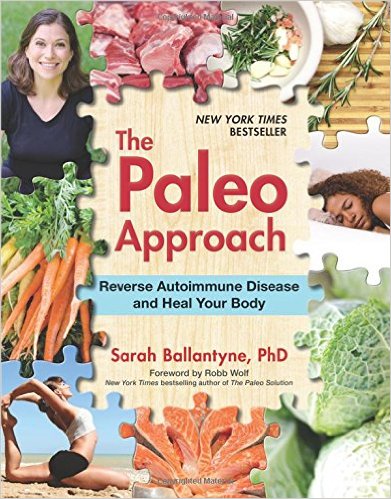
The next major step forward toward healing leaky gut happened when I began following the AIP.
In my opinion, Sarah Ballantyne, otherwise known as The Paleo Mom, is THE expert on the AIP. But there are others, like Eileen Laird and the duo Mickey Trescott and Angie Alt.
Also in my opinion, having an autoimmune disease is not a requirement for embarking on the AIP. If the goal is healing leaky gut or other gut issues, this diet and lifestyle protocol is great for that purpose.
Using the AIP, I focused on the following:
- Identifying any unknown food sensitivities and eliminating those foods from my diet
- Consuming more nutrient-dense foods
- Adding lacto-fermented vegetables to my diet
- Applying lifestyle recommendations such as practicing good “meal hygiene,” managing stress better, protecting my circadian rhythms such as attempting to resolve my insomnia (I'm still working on that), and exercising and moving my body more.
The bible for the AIP is Sarah Ballantyne's book, The Paleo Approach: Reverse Autoimmune Disease and Heal Your Body.
I'll share the details of my experience with the AIP in an upcoming healing story.
5. Identifying and Resolving Any Nutrient Deficiencies
For a long time, I’ve wanted to do SpectraCell Laboratories’ Micronutrient Test, but have yet to do so. In the functional medicine community, this test is often recommended. I once asked my integrative medicine doctor to order this test for me, and he refused to do so.
Instead, I’ve had various blood tests over the years that have identified a couple of nutrient deficiencies related to gut health, notably vitamin D3 and zinc.
According to Vikki Petersen, DC, CCN, Institute for Functional Medicine (IFM) Certified Practitioner, and author of The Gluten Effect:
An important tool against leaky gut is vitamin D. It turns out that D is needed for the gatekeeper system of the small intestine and when D is deficient, a leaky gut is the result. When we appreciate how closely vitamin D is tied into the body’s immune system and its correct functioning, it’s perhaps not a surprise that D would play a role in a healthy gut where 70–80% of the human immune system is housed. And it’s also not a surprise that vitamin D is frequently deficient in patients with celiac disease, gluten sensitivity, and other chronic digestive diseases. It’s important for everyone to get their vitamin D levels tested, and it’s especially important for those who already know they have any sort of compromised immune or digestive system. (2)
Dr. Petersen recommends the “sweet spot” of 50 ng/mL for the blood test called vitamin D, 25-Hydroxy. However, she says that the Vitamin D Council states it could be as high as 60 or 80 ng/mL, and she thinks that’s fine.
For many years, I’ve been taking vitamin D3 in supplement form because blood tests have shown that I’m deficient in it. I now take 5,000 IUs per day. A recent blood test showed my level at 64.8 ng/mL.
I also take 13 mg of zinc as part of my multivitamin. Blood testing has shown that my zinc level was in range but suboptimal.
Zinc is needed to produce stomach acid that is sufficiently acidic. Without strong stomach acid, digesting protein becomes difficult.
An Unusual Way I Discovered Some Nutrient Deficiencies
I know this next way I determined nutrient deficiencies hardly follows the conventional medicine model. However, I don’t strictly follow that model anyway!
I had an intuitive reading with a psychic with whom I’ve taken workshops from about how to use my Internal Guidance System (IGS), which is not unlike a GPS for your car. Essentially, your IGS is your intuition.
This psychic had sent out an email to her subscribers that she had been tested, approved, and placed on the Best American Psychic's national list. To celebrate, she was offering discounted 30-minute readings. I signed up.
During my reading, she said my spirit guides communicated to her that I was deficient in minerals, and that's why healing leaky gut had been eluding me. She recommended I take liquid minerals in order to heal my leaky gut.
Ever since then, I’ve been taking Blue Ocean Minerals, initially a ½ tsp dose per day, which I have increased to 1 tsp per day. (The product is now called OmniBlue Ocean Minerals.)
My guides also communicated to her that I was deficient in Omega 3’s and that I should find an Omega 3 fish oil supplement without Omega 6 in it.
Omega 3’s are anti-inflammatory and balance out all the Omega 6 in conventional meat and highly processed seed oils, such as canola oil and soybean oil. I don’t eat these seed oils anymore, but I do still eat conventional meat more often than not. Slowly, I am moving toward eating higher-quality meat.
Since increasing my Omega 3s, I have learned that for health issues unrelated to celiac disease or non-celiac gluten sensitivity (whichever one I have is unknown, given that I gave up gluten before being tested for celiac disease), I have a high need for Omega 3 fats, both DHA and EPA—and high as in 3,000 mg per day.
6. Healing Gastritis and GERD
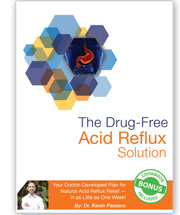
To heal my leaky gut, I had to first heal my gastritis and GERD, which were other sources of inflammation in my digestive tract. I used the natural healing protocol described in the book The Drug-Free Acid Reflux Solution by Dr. Kevin Passero.
I will cover the specifics of what I did in a separate healing story. I’ll add a link here after it’s written.
Meanwhile, I highly recommend Dr. Passero’s book. His protocol works! The healing I experienced from his protocol was confirmed not just through symptom relief but also through an endoscopy of my upper GI tract (which includes the esophagus, stomach, and duodenum—the upper part of the small intestine).
In two previous endoscopies two years apart, it was noted that I had both gastritis and GERD. Some number of months after I followed the instructions in Dr. Passero's book, I had a third endoscopy.
My gastroenterologist told me that my gastritis was GONE. In addition, my esophagus was no longer inflamed, though he could still see faint rings in my lower esophagus, which indicates tissue damage. Hopefully, in time, this damage will fully heal.
Even after seeing this healing for himself (he had also performed my second endoscopy), my gastroenterologist still wanted me to take Dexilant, a powerful acid-reducer. I declined.
7. Drinking Herbal Teas That Help Heal the Intestinal Lining
Thanks to the advice from an herbalist, I drank both slippery elm bark tea and marshmallow root tea to help heal my gut. I made each tea at home from dried herbs that I bought in bulk from the Bulk Herb Store.
Both teas are soothing to the digestive tract. They coat the gut, calming inflammation and minimizing the absorption of toxins. They also help heal damage to the gut lining.
Slippery elm bark tea contains mucilage, which stimulates mucus secretion. Mucus is protective against ulcers and excessive acidity in the digestive tract. Marshmallow root tea is also mucilaginous.
The herbalist also recommended I drink homemade ginger root tea. It’s anti-inflammatory and tastes yummy with stevia. I continue to make and drink this tea regularly. I still have the other two teas on hand for occasional use.
So What’s Next for My Healing Journey?
Next up is healing my gut dysbiosis. I suspect I’m on my own on this leg of my journey. At least it appears that no one presently on my healthcare committee is able to help me.
I’m one of those difficult cases, evidently.
Flooding my digestive tract with probiotics in all its various forms—for years—hasn't resolved this issue, though it is helping: My digestive woes aren’t getting worse. However, I still have early satiety and chronic constipation. And I suspect my insomnia is related to this issue.
It’s time to put on my medical detective hat yet again…
References
1. Fallon, S. Nourishing Traditions: The Cookbook That Challenges Politically Correct Nutrition and the Diet Dictocrats. 2nd edition. NewTrends Publishing, Inc. Oct 1, 1999. [Book]
2. Peterson, V. Is Low Vitamin D Causing You a Leaky Gut? Jan 30, 2014. [Article]
CeliacFAQ.com home page > Healing Stories > Healing Leaky Gut: My Story About How I Finally Did It
